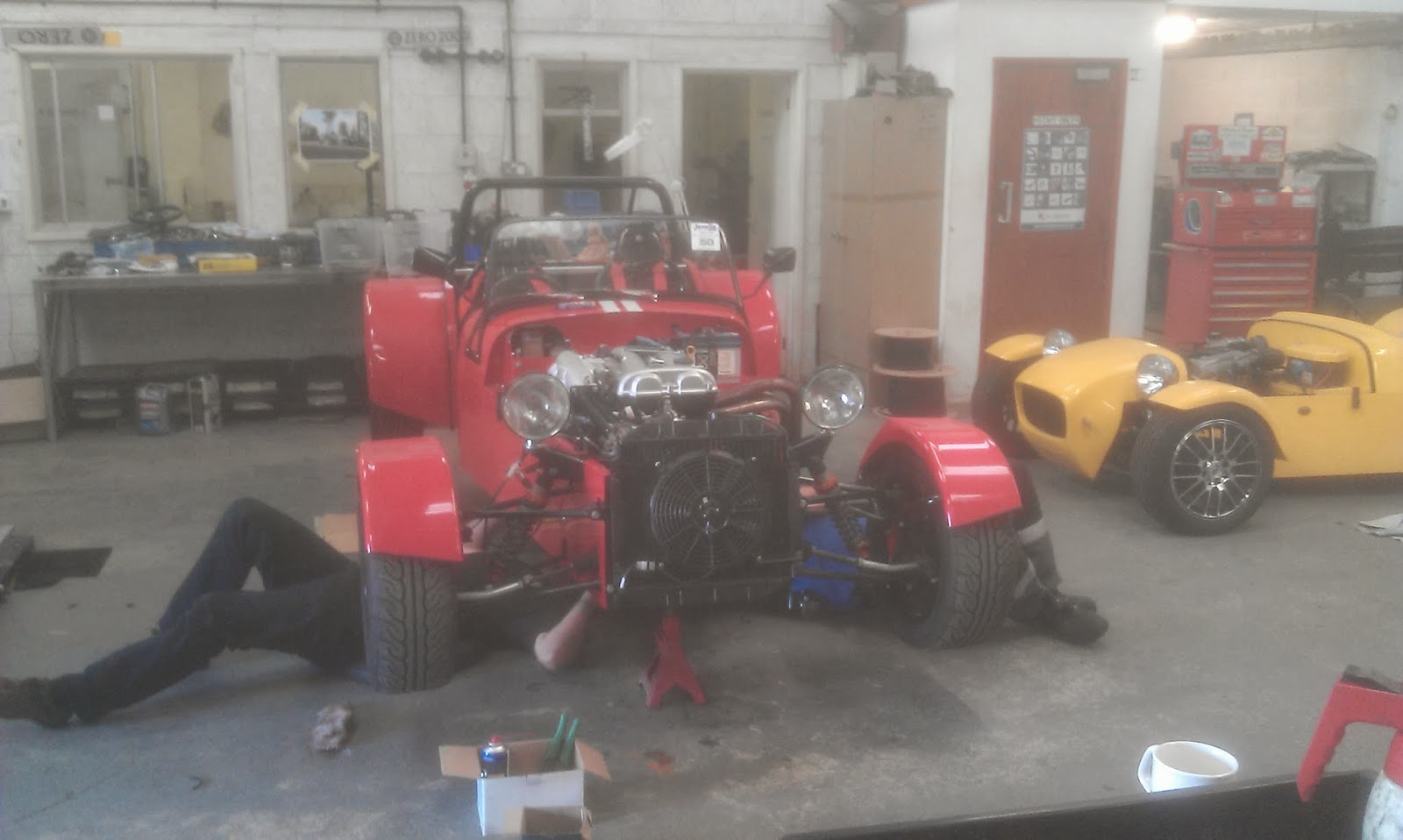The GBS factory is some three and a half hours drive from my home in Southampton, so last Friday I set out at six in the morning to visit the factory and test drive the (very nearly) finished Mazda based Zero demonstrator car. This is something I have been looking forward to for a long time - a glimpse in to the future of what my car will be like when it's finished.
Arriving at the factory and the first sight of the car wasn't exactly what I had expected or hoped for. It seems that, during a recent track day, someone forgot to administer oil to the gearbox, which lead to the subsequent demise of said gearbox, and a very hot engine. As such the demo car was propped up on stands with the engine and a new gearbox being worked on next to it. I can't fault the GBS team for commitment here, and having said I could have a test drive that day, a test drive was exactly what they were going to provide me with, which meant fixing and refitting the engine and a new gearbox. I busied myself taking pictures of the fuel systems (next job on my car) in the cars in the workshop, and making notes of the positions of various parts and ways to fit them etc. while Keith and Rafael worked on the engine and gearbox.
By lunchtime the engine was back in the car leaving what looked like the fairly simple job of reconnecting the water, fuel and electrics. Should be going in no time... However, a problem with the IAC meant an hour or so with a laptop working on the Emerald ECU. By this time the car was being worked on by 3 people - Richard, Keith, and Rafael, resembling a scene from a pit lane just before the race. Richard even put off another job to get the car running. By mid afternoon the car was back together and filling the workshop with exhaust fumes. Lovely.
On the road and initially it feels very much like the Zetec powered Zero, as you might expect. The exhaust note is slightly higher and the smaller 1.6 liter engine is very responsive when opening up the throttle. The engine is controlled by an Emerald ECU which has recently been tuned on the Emerald rolling road. The acceleration doesn't seem as quick as the Zetec, but it has been a while since I drove it, however just like the Zetec it just keeps accelerating faster and faster.
Cornering is every bit as much fun as I remember. The demonstrator has some specially made brakes, developed by GBS, fitted to the front, which respond instantly and give you the confidence to chuck the car round a roundabout or sharp corner knowing you can have it all back under control with a touch on the pedal. The rear brakes are the standard MX-5.
Along with the engine mapping, I know GBS have been working on the suspension set up. I am no expert but I think this car feels even more solid on the road than the Zetec powered car I drove back in February. I have gone for the slightly cheaper GAZ shocks but one thing I will make sure to do is spend some serious time and effort getting them set up properly.
Another thing I will be doing on my car is fitting some doors! They don't always look right on a seven style sports car, but the buffeting from the wind when only going moderately fast was a bit overpowering.
This was a glimpse in to the future of what my car will hopefully be like if I ever get round to finishing it. If it turns out to be half as much fun to drive as the factory demonstrator, needless to say I will be very happy...
All in all a great experience and one I would recommend anyone thinking of building a kit car go and do as soon as possible. Lastly I must say a massive thank you to GBS for not only letting me loose with the car, but putting it back together in time for me to drive it. Great work guys, no-one can say you don't put the effort in! Thank you.































